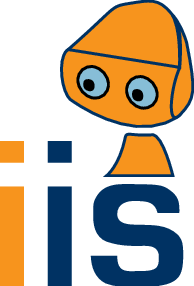Home
People
Projects
Research
Publications
Surveys
Courses
Student Projects
Jobs
Downloads
Sidebar
This is an old revision of the document!
Table of Contents
Reporting
Go to the Participant Portal, and click the MP button of the IMAGINE project to launch the Grant Management Services (GMS). The important items are:
- Technical Part: Ignore this link in the GMS; instead, see the instructions regarding periodic reports.
- Financial Part: Report your numbers there.
- Continuous Reporting: See below.
Instructions for Period 1
Internal deadline for all of the above: March 16, 2018 (leaving just enough time for me to complete things, internal QA, and submission before the review)
By the same deadline, complete your Continuous Reporting:
Continuous Reporting
Continuous Reporting can take place any time, and should be complete by the end of each reporting period. To launch the Continuous Reporting Tool (CRT), click the corresponding link in the GMS.
Tabs in the CRT - follow these instructions proactively
- Summary for publication: Follow the instructions below.
- Deliverables, Ethics, DMP, Other Reports: After internal review, Justus will upload the documents to the CRT.
- Milestones: UIBK will take care.
- Critical Risks: Discussed at meetings.
- Publications: Make sure your publications are listed at OpenAIRE (e.g. by uploading them to Zenodo; try BibTeX import) and linked to IMAGINE. Where this is not possible, use Manually add publication. These will appear in the CRT as Suggested publications from OpenAIRE. Click on the title, make any applicable adjustments, and click Import publication.
- Dissemination & Communication Activities: Do not fill this tab. Instead, each partner please report their activities on this Google sheet.
- Patents (IPR): Each partner should report any relevant items they lead in the CRT.
- Innovation: Please send Justus any relevant information by e-mail.
- Open Data: Analogous to Publications.
- Gender: Each partner should report their own numbers in the CRT.
- ABS Regulation: not applicable
For the Summary for publication:
Regarding
Work performed from the beginning of the project to the end of the period covered by the report and main results achieved so far (For the final period please include an overview of the results and their exploitation and dissemination)
each partner please send Justus up to one brief paragraph per major contribution, and optionally a picture with a one-line description.
Regarding
Progress beyond the state of the art, expected results until the end of the project and potential impacts (including the socio-economic impact and the wider societal implications of the project so far)
each partner please send Justus up to one brief paragraph per major contribution.
Zenodo
When you upload publications, data sets, or source code to Zenodo, make sure you check the metadata manually and then Publish your changes. At the very least, make sure IMAGINE is acknowledged under Grants.
Publications
Be sure to include an appropriate acknowledgment.
Source Code
As with any intellectual property created during IMAGINE, carefully decide how to proceed; in many cases this will require a discussion by the Executive Board + ECYC:
- publish under a copyleft license (forcing third parties to contribute back their derived work)
- publish under a liberal license (allowing third parties to take their derived work commercial)
- protect by patent (essentially only possible for unpublished material)
- keep confidential
Source code is apparently not covered by the EU Open Data initiative, and is not indexed by OpenAire. Thus, for project reporting, it is sufficient to reference public repositories (e.g. on GitHub).
That said, it often makes sense to link source code to publications and/or data. Here, Zenodo comes in handy. To get source code into Zenodo:
- Link Zenodo to GitHub. Then, public (not private) repositories will be listed in Zenodo.
- Activate your chosen repositories by flipping a switch. From this point onward, Zenodo will automatically download any release made from those GitHub repositories and register a DOI.
- As always, manually check and complete the metadata associated with every release.

